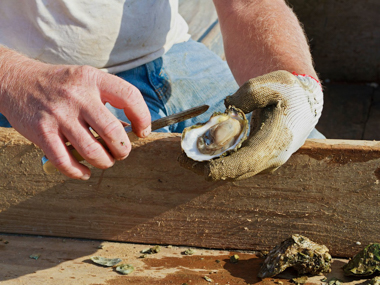Holy Shucking Fit! You Might Be Shucking Oysters All Wrong
WIRED—March 16, 2017

NOT QUITE A year ago, I wrote a story about the merits of good oyster knives, getting a shucking lesson from a pro in the process. I walked away from the lesson with a refreshed appreciation for finding the right tool for the job, but what was most impressive was the shucker’s technique, which was like nothing I’d ever seen.
My lesson came from Lucas Stone, a shucker at Seattle’s fantastic Westward restaurant, and he demonstrated a subtle technique with the formal beauty that recalled the tango. Choking up on the knife with one hand and palming the oyster in the other, he snugged the tip of the blade into the oyster hinge, then raised them together to his chest, and popped it open, almost imperceptibly.
I returned to Westward recently, to get the skinny on the technique, this time meeting with Ted Stearns, winner of the shucking competition at the 2015 Bearfoot Bistro World Oyster Invitational & Bloody Caesar Battle in Whistler, British Columbia. Stearns, 29, has a callus on his right hand that’s pronounced enough to notice when you shake it, a bump that’s the result of spending years working with an oyster knife.
At the competition, sterns shucked 30 oysters—10 Virginicas, 10 Pacifics, and 10 tiny Olympias—in 3 minutes and 11 seconds.
“I won because I was shucking by hand, not table shucking,” he says, breaking shucker-dom down into two techniques. Table shuckers are the far more common breed, particularly at home, working on a countertop. While hand shuckers can work their way in from the bill (the larger, rounded end of the shell), Stearns prefers starting at the hinge, aka “buttshucking.”
There’s only one way to find out if you’re a buttshucker—read the full story here on WIRED.